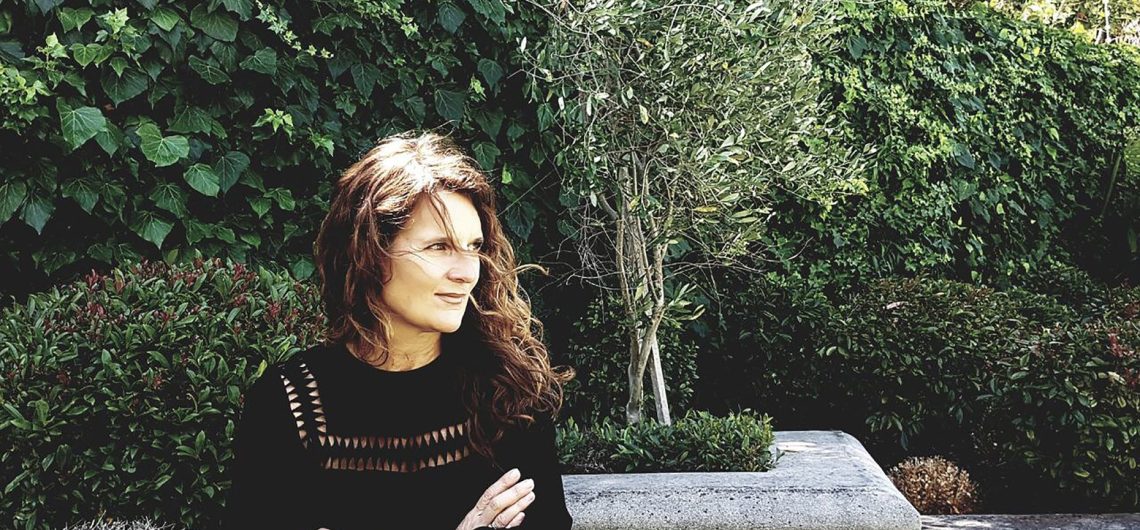“If someone really wants to find me, they’ll find me,”
Cape Town–based interior designer Caline Williams-Wynn, of Artichoke Design, referencing her unusual absence on social media, and the Internet as a whole.
“I don’t even have a business card,”
she laughs. It’s a refreshing take, and a philosophy that’s worked for Williams-Wynn, allowing her to dedicate most of her time to her clients, a growing roster of luxury safari lodges that have one thing in common: spectacular design.
The South African native studied design and fine art, starting her career in residential interior design while managing a small design shop in Johannesburg. “I would do three trips a year, bringing back stuff from all over the world,” she tells Vogue. It was an annual pilgrimage that came easily to her, since travel was at the forefront of much of her childhood. Though born and raised in South Africa, Williams-Wynn’s mother is Italian, and her father Lebanese. Her sister lives in France, and her brother is in Australia. “I have a very cosmopolitan family,” she explains. “Though when it comes to my style, I was most influenced by my grandmother and tagging along on her travels as a teenager. We made it all over the place; she was the most amazing lady.”
But when the interior design business got too hectic, Williams-Wynn had to make a choice: the shop or the design work. Design won, and 10 years into it, she acquired her first safari lodge project. “It’s weird, I just fell into it, and the projects keep coming,” she says. More than 90 percent of her portfolio comes from lodges, and she only takes residential projects on a repeat-client basis.
Williams-Wynn is the face behind some of today’s hottest safari lodge openings, including the 2016 headline-making opening of The Highlands, a Ngorongoro Crater outpost by luxury safari outfitter, Asilia. Its design showcases the hallmark of Williams-Wynn: an unparalleled commitment to the local community and its building materials. “You’re actually part of the village here; you hear the bells from the cows every day,” she says, referring to the herds that belong to the local Masai people in the Tanzanian countryside. Williams-Wynn skipped traditional wall decor and instead sought the talents of renowned South African photographer Graham Springer, adorning the walls of the eight geometric dome-like tents with black-and-white portraits of local villagers. “It takes it to the next level when you can actually go and find these women dressed up in all their jewelry,” she notes.
Her latest project, the just-opened Jabali Ridge (also by Asilia) in Southern Tanzania’s Ruaha National Park, is “a bit up on a hill surrounded by all these huge beautiful boulders,” Williams-Wynn explains. “They’re the inspiration behind the whole thing.” Each of the eight stand-alone bungalows were built solely from locally sourced wood by local craftsmen and designed to meld seamlessly into the environment, their colors evoking the textures of the sea of baobab trees that dot an endless savanna from every which way you look. Inside, Williams-Wynn utilized fabrics from a local South African artisan to set an organic palette. “She takes a piece of natural linen and rolls it up in eucalyptus leaves then puts it into a solution,” Williams-Wynn explains. “It leaves an impression on the fabric, which is a lot like the pattern of the baobab trunks. It’s almost like she’s taken a photographic imprint and used the negatives.”
This commitment to locality may be what allows Williams-Wynn the distinction of being Africa’s most in-demand safari lodge designer. Or maybe it’s her humility. “A company recently reached out to me and in the email, they said, ‘We want the world’s most renowned interior designer,’” she says. “I thought, My goodness, what are you doing!?”
![]()


Comments